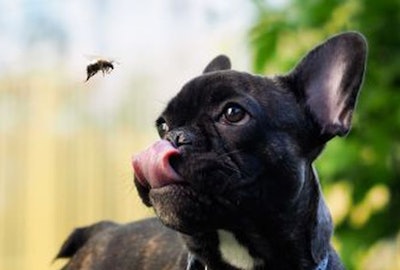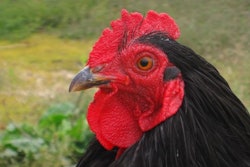
Insect-based pet foods have been around less time than some cicadas. Mainstream use of black soldier fly larvae, crickets and other arthropods in pet food has grown in popularity over the past decade. Insects have started to overcome cultural stigmas, along with regulatory barriers. Despite this, insects still have a limited amount of peer-reviewed research on their use as novel pet food protein and oil sources. For example, when scientists reviewed what research there is on insect-based ingredients in dog and cat foods, they found only two studies have evaluated how insect-based dog foods effect the nutritional status and health of dogs and none on cats. The researchers published their scientific literature review in the Journal of Insects as Food and Feed.
Overall, the researchers reviewed dozens of studies, and despite the gaps, found research on insect-based pet food ingredient’s nutrition, sustainability, marketability and other aspects.
Of particular importance to the pet food industry, insects have nutritional digestibility values similar to conventional protein sources, study co-author Dr. Guido Bosch, animal nutrition professor at Wageningen University, said. Palatability of insect-based ingredients doesn’t seem to be a problem, although it can become a barrier at higher inclusion levels. Likewise, fecal scores aren’t affected negatively. However, pet food brands may need to avoid overselling some aspects of insect-based pet food ingredients, such as sustainability and bioavailability of nutrients.
The complex calculus of pet food ingredient sustainability hasn’t been fully studied, leaving questions that marketers may be willing to fill with supposition. For example, insects may have lower resource requirements for rearing than cows, chickens or other livestock. However, many pet foods are made with parts of those two-or-four-legged animals not eaten by humans. Comparing the ecological ramifications of cattle ranches to those of bug farms isn’t straightforward. Insects may need less water and feed to produce a certain quantity of protein than cows. Yet, if the nutritious but low-status parts of that cow, such as hearts, don’t go into pet food, those co-products drop in value and could go to waste. Scientists haven’t fully compared those apple-to-orange protein sources from a sustainability standpoint.
As with sustainability, pet food marketing acclaims about insects as a natural part of dogs’ and cats’ ancestral diets may need to be tempered by evidence. While cats’ wild relatives do consumer insects, they made up less that 5% of their diets in biologists’ observations. Wolves did not eat enough insects to make a significant portion of their diets. While many pet owners have seen their dogs and cats eat a random housefly, that may not mean the mammals evolved to eat insects.
Limiting amino acids in insect-based pet foods
Regardless of dietary precedents, as protein sources, the researchers identified which amino acids might need to be supplemented to ensure insects provide dogs and cats with all their bodies need to make more proteins. These limiting amino acids varied by species of insect and pet requirements. For example, methionine was a limiting amino acid in black soldier fly larvae for both dogs and cats.
To compensate, pet food formulators may need to add more of the protein source, although this will result in less efficient use of nitrogen and higher nitrogen excretion in urine, Bosch said. Likewise, pet food makers could combine insect-based ingredients with a protein source that is rich in the specific amino acid that is limiting in the insect meal. Another option is to supplement the amino acid when there is a commercial one available.
More research will help formulators best use insect-based pet food ingredients and understand the ecological repercussions of doing so.














